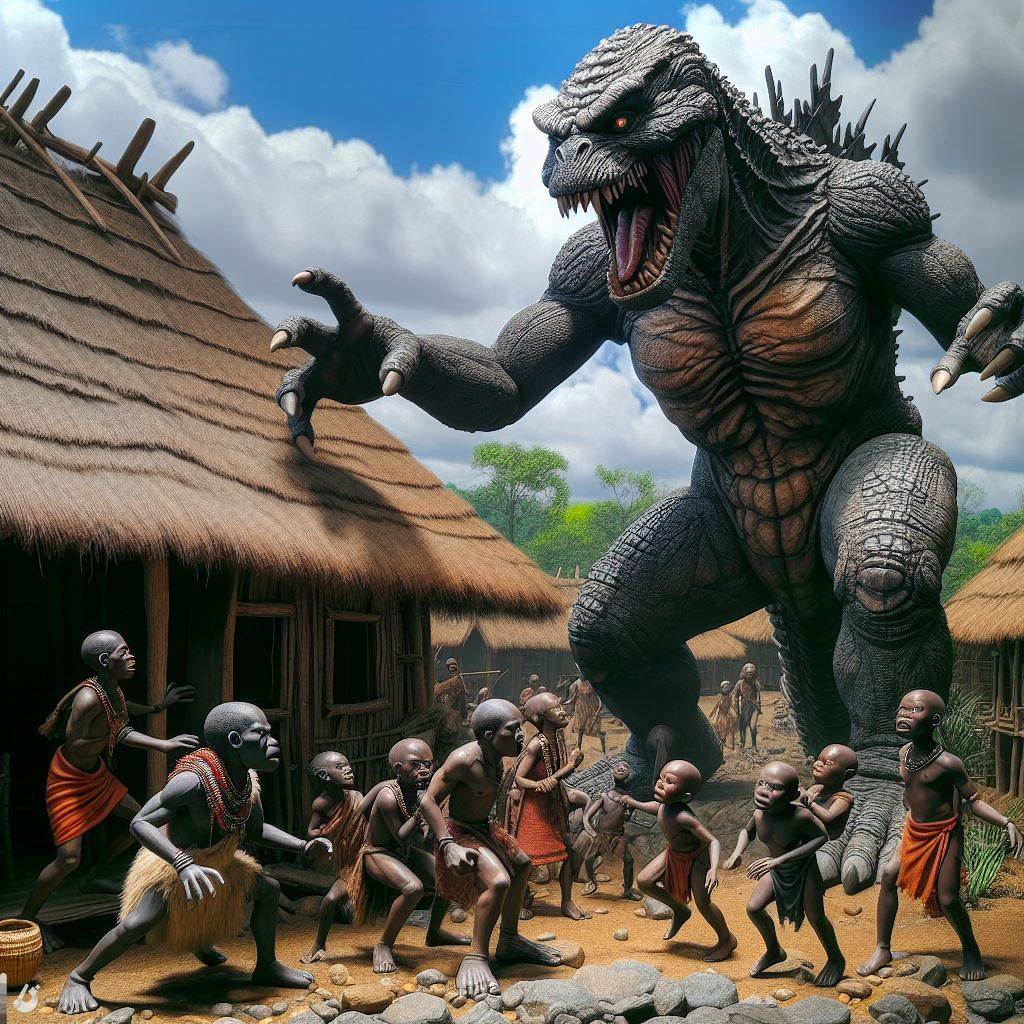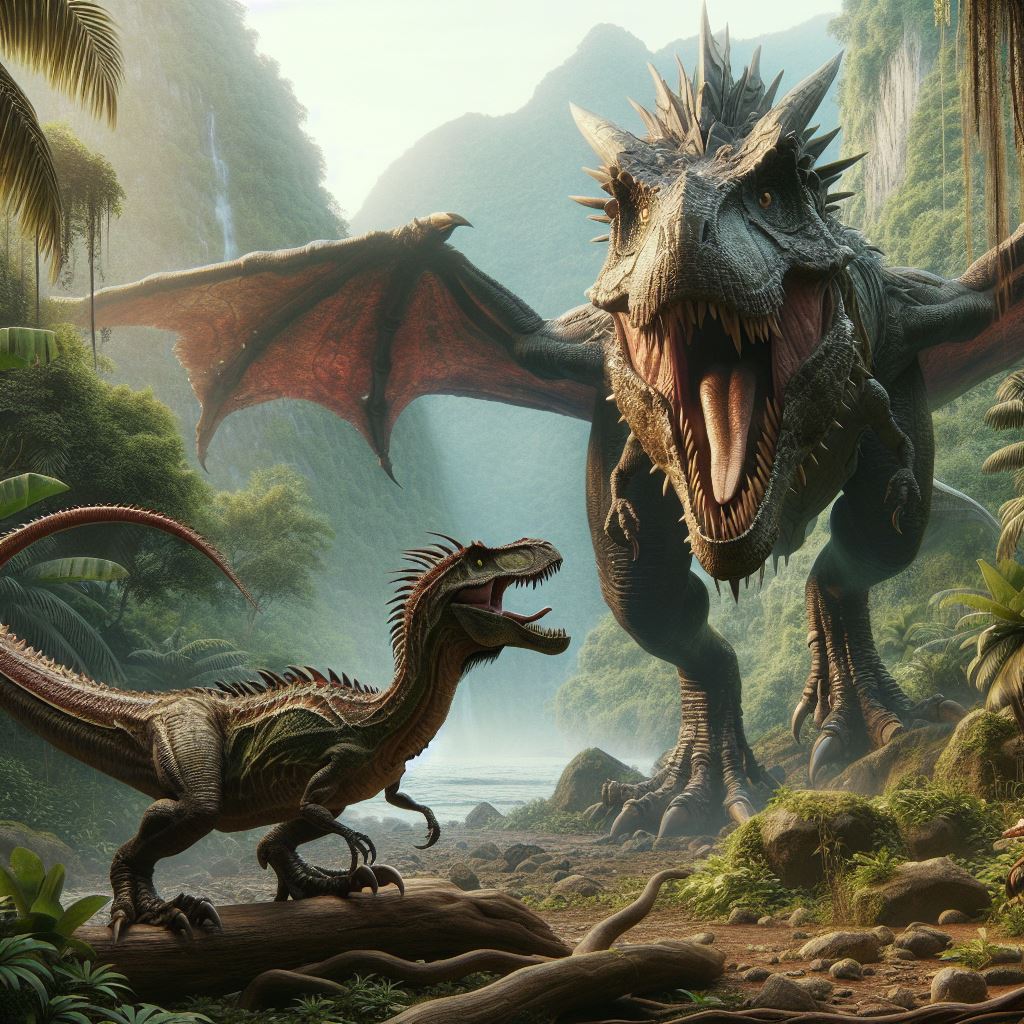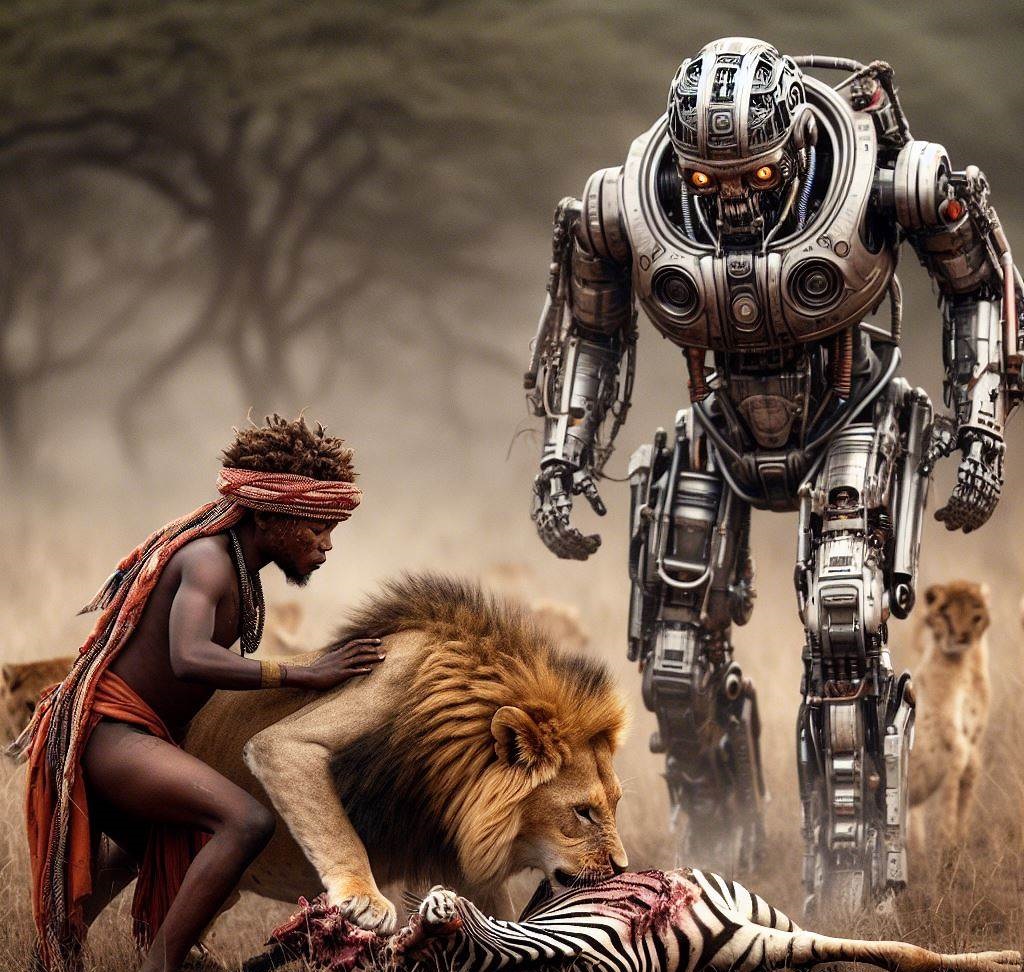In the dimly lit aisles of my local library, amidst the dusty stacks of forgotten tomes, I stumbled upon an oddity that shook my very understanding of the world: a picture of a tiny man next to a tree. Now, I’m not talking about just any tree. This arboreal behemoth must have been at least three feet in diameter, making the man in the picture a mere 3-5 inches tall.

At first glance, I was amazed that a man could ever be so small, and marveled at the challenges he must have faced in his every day life, but then I turned the page. There, staring back at me, was a crowd of tiny people perched atop a fallen tree that looked positively gigantic in comparison. It was as if I had stumbled upon a Lilliputian civilization, frozen in time by the lens of some long-forgotten camera.

Questions raced through my mind like squirrels on a caffeine binge. How could this be possible? When did people start becoming what we see as normal size? Is there a secret technology buried in the annals of history, waiting to be unearthed so we can all become giants and wreak havoc upon our enemies?
As I delved deeper into my research, I discovered more pictures of these diminutive folk, engaged in all manner of activities. Some were felling trees, their tiny axes glinting in the sunlight. Others lounged lazily in little beds carved out of wood, their miniature forms captured for eternity by friends armed with newly invented cameras.

But the mysteries only deepened. It wasn’t just people who were tiny; it was horses, dogs, and other animals too. When did this shift in size occur, and for what reason?

Intriguingly, some of the pictures showed inventions like cars, suggesting that this tiny civilization existed even in the days of my own grandparents. Why had my grandparents never mentioned living in a world of tiny people? Were they hiding something from us, or had they simply forgotten about their tiny past?

The more I dug, the more questions I unearthed. What was life like for these tiny people? How did they navigate a world that must have seemed gargantuan to them? And most importantly, where did they all go?

As I sit here, surrounded by stacks of dusty books and faded photographs, I can’t help but feel a sense of urgency. We are on the cusp of unraveling one of history’s greatest mysteries, but we can’t do it alone. We need your help, and I mean you, the one reading this article right now.

If you have any information about this phenomenon, any clue, no matter how small, please come forward. Together, we can shine a light on the shadowy corners of history and uncover the truth about the tiny people who once walked among us.

Hiram Glassman




